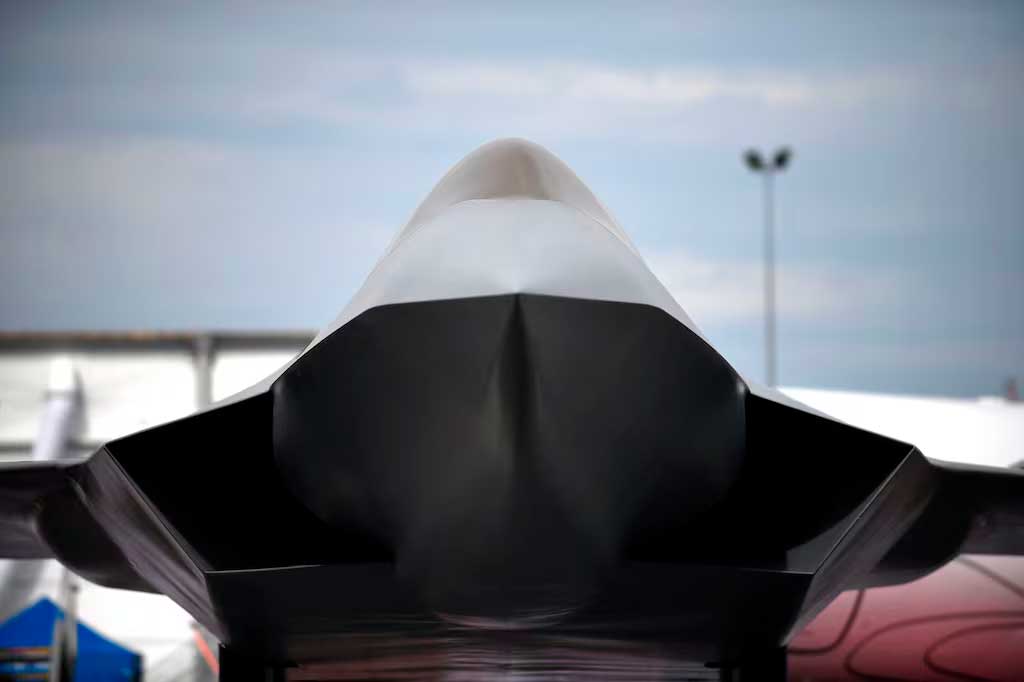
France is asking its partners to revise the industrial division of the FCAS program to guarantee delivery of the fighter jet from 2040.
France has made an official request to Germany and Spain to rethink the distribution of industrial work within the Future Combat Air System (FCAS) program. This project aims to bring a new air combat system into service around 2040. The French Defense Procurement Agency (DGA) cites the need to ensure that the schedule is met, as delays are emerging in the current phase. Dassault Aviation, which is responsible for developing the fighter jet, is demanding more control over certain key components of the program. The dispute with Airbus, representing Germany and Spain, concerns industrial responsibilities and governance. Despite technical progress, the implementation of phase 2 in 2026 is threatened if a new organization is not found quickly. Paris is calling for governance inspired by the nEUROn program, with Dassault at the helm.
France wants to strengthen its leadership in the FCAS project
The FCAS project was launched in 2017 with a clear ambition: to provide Europe with a new-generation air system capable of ensuring air superiority in a contested military environment. The program is based on three main pillars: a sixth-generation fighter jet (NGF), remote carriers, and a combat cloud to network all the elements.
From the outset, the division of labor was intended to be balanced: Dassault Aviation for the aircraft, Airbus for the combat cloud, and Indra Sistemas for the drones. But in reality, industrial coexistence has remained fragile. Dassault Aviation regularly denounces the delays caused by governance discussions and attempts at co-management imposed by Airbus, particularly on critical components of the fighter.
Today, France wants to revise this organization. It is proposing a clearer division of tasks based on experience and technical expertise. Dassault, which already designs the Rafale and led the European nEUROn project, wants to regain control over critical elements of the aircraft, particularly the cockpit, mission control, and system architecture.
The stated objective is twofold: to avoid delays and to ensure that the program is led by those with practical experience in implementing a complete fighter jet. This approach calls into question the principle of strict parity between the three countries, proposing differentiated governance based on actual skills.

A tight schedule: is 2040 still achievable?
The initial schedule called for a flight of the NGF demonstrator around 2029, with the complete system entering service around 2040. However, several delays have already been recorded in phase 1B, notably related to intellectual property issues and the distribution of industrial tasks.
Phase 2**, which is due to be launched in early *2026*, consists of producing a functional demonstrator. This step is essential to validate the technological choices, test interactions with drones, and evaluate the combat cloud in real-life situations. However, any delay in structuring this phase could postpone delivery of the final system by several years.
Eric Trappier, CEO of Dassault Aviation, regularly warns of the accumulated time lag. According to him, commissioning in 2045 is now more realistic if current conditions persist. For its part, Airbus continues to communicate the 2040 target, but without providing any technical assurance that the milestones will be met.
This delay is problematic on several levels. First, for the French armed forces, which are counting on the NGF to ensure the permanence of airborne nuclear deterrence, currently provided by the Rafale F3-R. Secondly, in budgetary terms, a delayed entry into service would require an adjustment to the military investment cycle for the period 2035–2045.
The strategic challenges of industrial rebalancing
Behind the issue of work sharing, it is in fact technological control of the project that is at stake. For France, ensuring leadership in the aircraft’s architecture would enable it to control future developments, guarantee the autonomy of decision-making chains, and facilitate export prospects.
This rebalancing would also have an impact on European technological sovereignty. If Dassault remains the prime contractor for the NGF, this would guarantee the presence of an independent capability for designing complete combat systems. However, this requires Germany and Spain to accept a secondary role on certain critical subsystems.
Conversely, maintaining an equal distribution between partners in the name of fairness could result in a cumbersome governance structure, conducive to conflicts of responsibility and inefficiency. The difficulties encountered during the first phase of the program are evidence of this reality.
The model proposed by France is inspired by nEUROn, a stealth drone program led by Dassault and involving six European countries, in which technical leadership was centralized. This centralization made it possible to deliver a demonstrator in less than eight years, despite a limited budget.
What are the prospects for European defense cooperation?
The FCAS program is not just an industrial project: it embodies the desire to create a common European air capability capable of competing with American (NGAD) and Asian (China, Japan) projects. If the cooperative model fails, the very credibility of integrated European defense would be weakened.
Persistent tensions could lead to Germany’s partial withdrawal or to cooperation being redefined according to industrial blocs. The existence of the competing GCAP (Global Combat Air Program) program, bringing together the United Kingdom, Italy, and Japan, reinforces this threat. If the FCAS loses coherence, some European states could be tempted to join this second axis.
To avoid this scenario, a compromise seems necessary. It will have to allow Dassault to technically lead the aircraft component, while guaranteeing Airbus and Indra visible responsibilities for the cloud and drone components. It will also need to incorporate effective operational governance capable of making decisions without paralysis.
The survival of the FCAS project will depend on this ability to combine technological efficiency and political cooperation without sacrificing speed or the strategic interests of each of the partners.
War Wings Daily is an independant magazine.